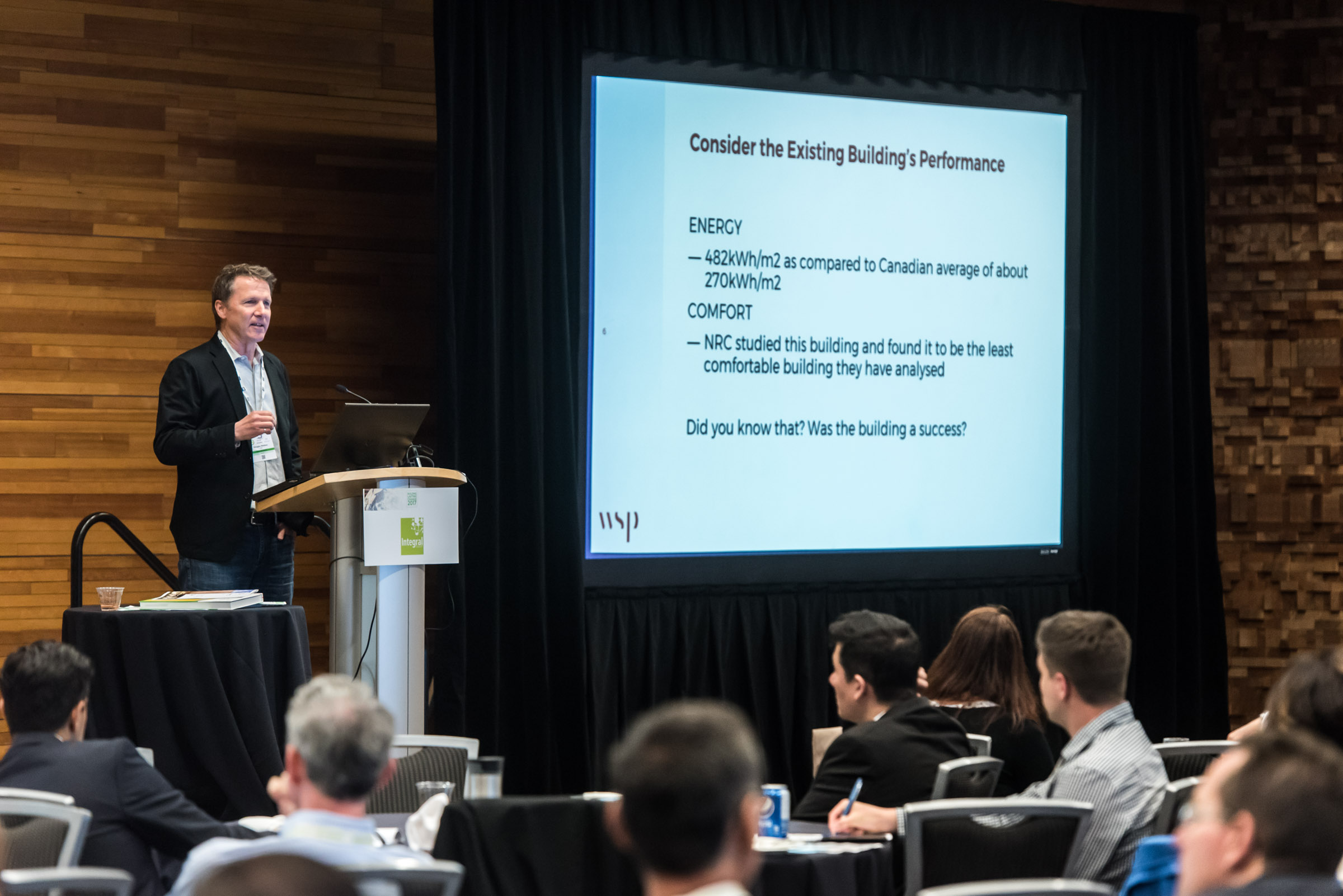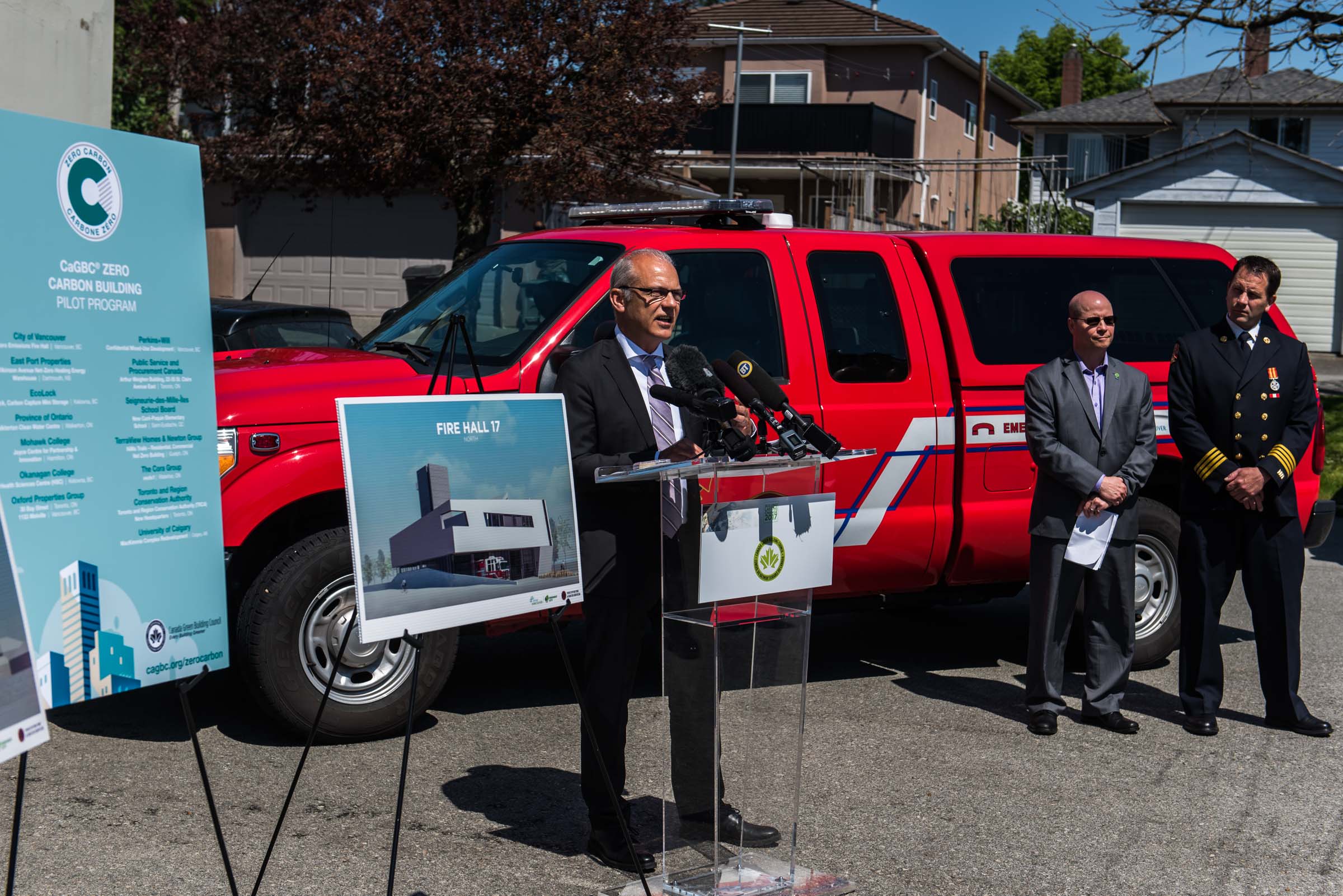Canada Green Building Council – The First “Zero Carbon Building” Standard in the World

Projects Sponsor
The development of the Zero Carbon Building Standard was driven by the desire of the Canada Green Building Council (CaGBC) to ensure that the Canadian real estate industry could meet its obligations to limit the threat of climate change as captured under the Paris Agreement. Specifically, greenhouse gas (GHG) emissions must be substantially eliminated from building operations by the year 2050. This is a formidable challenge, requiring a fundamental shift in how building performance is assessed.
Historically, energy efficiency has been used as a proxy for GHG emissions. This is simplistic and inaccurate. The Zero Carbon Building Standard project — helmed by Mark Hutchinson, Vice President, Green Building Programs — aims to put the spotlight clearly on emissions, providing a rigorous standard to accurately assess emissions from commercial, institutional and multi-family buildings.
A key objective was to drive recognition that there are choices about the forms of energy we use, and building owners have a responsibility to ensure that their buildings operate on low-carbon energy.
A second objective was to address the most important weaknesses of current building design, namely an under-appreciation of strategies to reduce heating and cooling demand, and a failure to incorporate renewable energy generation. Finally, it was critical that the standard address existing buildings, which will still constitute 50% of all buildings in the year 2050.
In early 2016, a research phase was initiated when a consultant was hired and a working group of key stakeholders, including included governments, utilities, academia and others, was formed. A second working group of renewable energy experts was struck to provide subject matter expertise in this critical area. The CaGBC’s standing energy technical advisory group and its program steering committee were also brought into discussions. This phase of work culminated in the release of a Zero Carbon Building Framework report in November 2016.
The framework provided a summary of research into programs that aim to drive high energy efficiency and low-carbon building design. A definition was developed for what constitutes a Zero Carbon Building and in May 2017 the final standard was released and it was determined that the standard should serve as the foundation for a program providing recognition through third-party review and certification. Development and consultation also provided a basis for the future and ongoing efforts that will be required to support and accelerate the industry’s transition to the low-carbon economy of the future, including tools and training.
The CaGBC sought teams working on high-performance, low-carbon building designs and retrofits that were willing to commit to serve as pilot projects over the course of 2 years. The response was strong, and a total of 16 projects were selected representing buildings of many types and scales, from coast to coast. There is participation from federal, provincial and municipal levels of government, as well as the private sector.
Once underway, the first challenge faced in the development of the Zero Carbon Building Standard was achievement of consensus on the need for a program focused on carbon. Historically, energy efficiency has been viewed as simpler to measure and more directly relatable to building owners, given the strong correlation with energy costs. Energy efficiency is also sometimes viewed as more ‘fair’ given that it does not recognize the dramatic differences in the carbon associated with power generation across the different regions of Canada. Through discussion, stakeholders came to recognize that the ultimate goal must be to reduce emissions and that in order to do so a program of measurement and verification must exist.
A second challenge lay in determining the scope of the eventual standard. Historically, programs to improve energy efficiency (including building codes) have been fairly prescriptive and detailed. There was some support for this approach, as it provides designers and operators guidance and helps assure desired outcomes. On the other hand, there is only one key outcome, low emissions, and the industry is already faced with many different programs, adding significant cost and effort to projects. In the end, it was determined that simplicity was critical to success.
By defining a clear and achievable means of assessing progress against the objective of eliminating GHGs from building operations, the standard will enable tangible and measurable progress towards a low-carbon economy. The standard is already informing the work of others including different levels of government.
Finally, the standard is serving to coalesce industry efforts and inspire stakeholders to look at their work from a new perspective in order to contribute to the larger goal of mitigating climate change.
For more information, press here

















